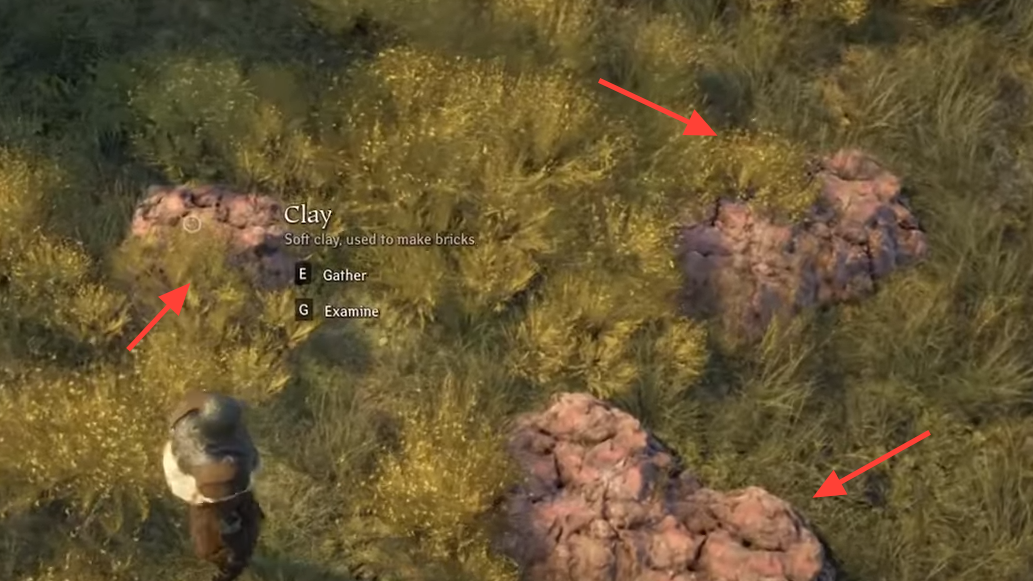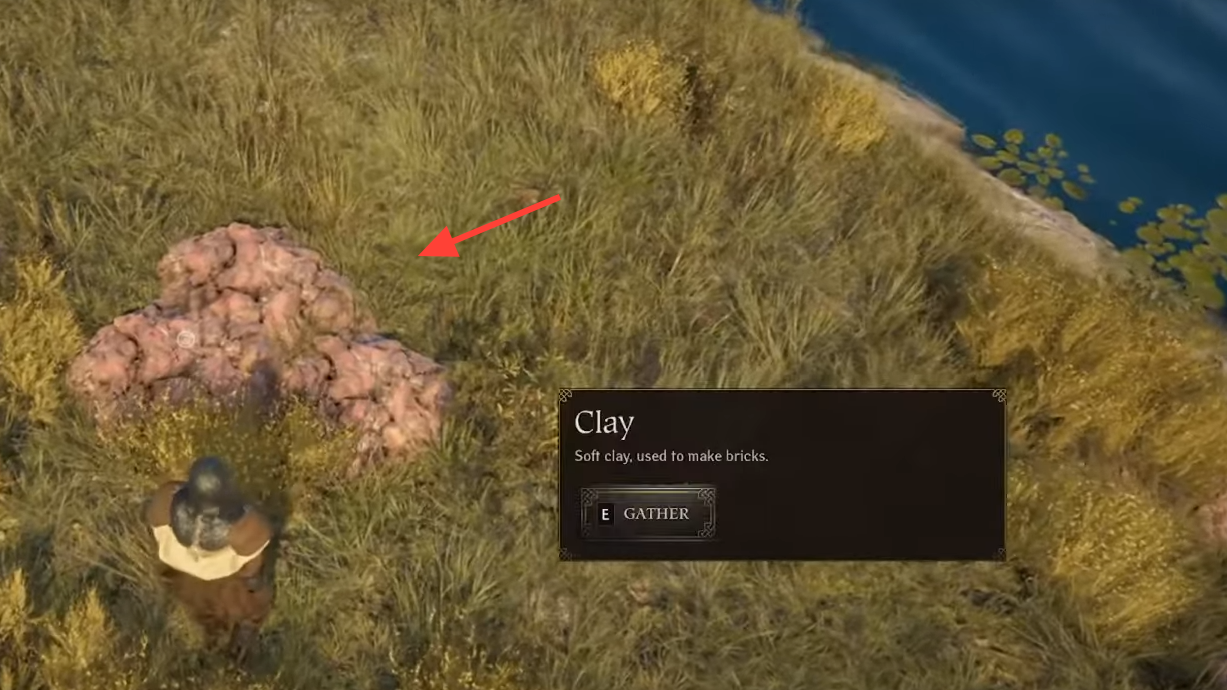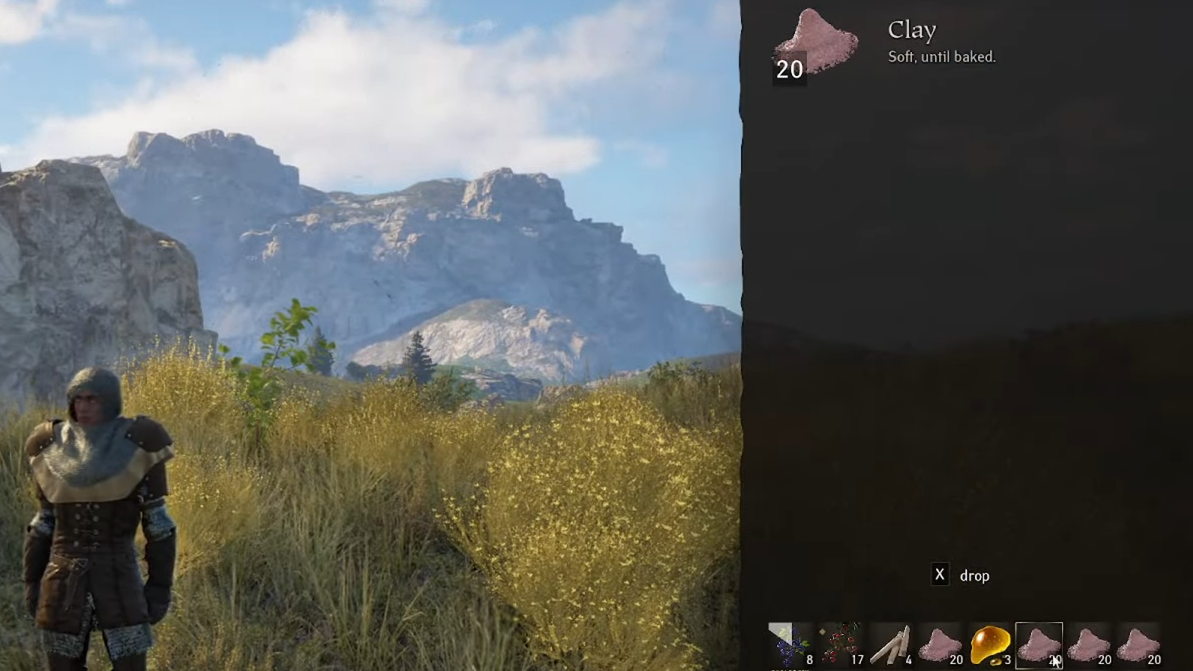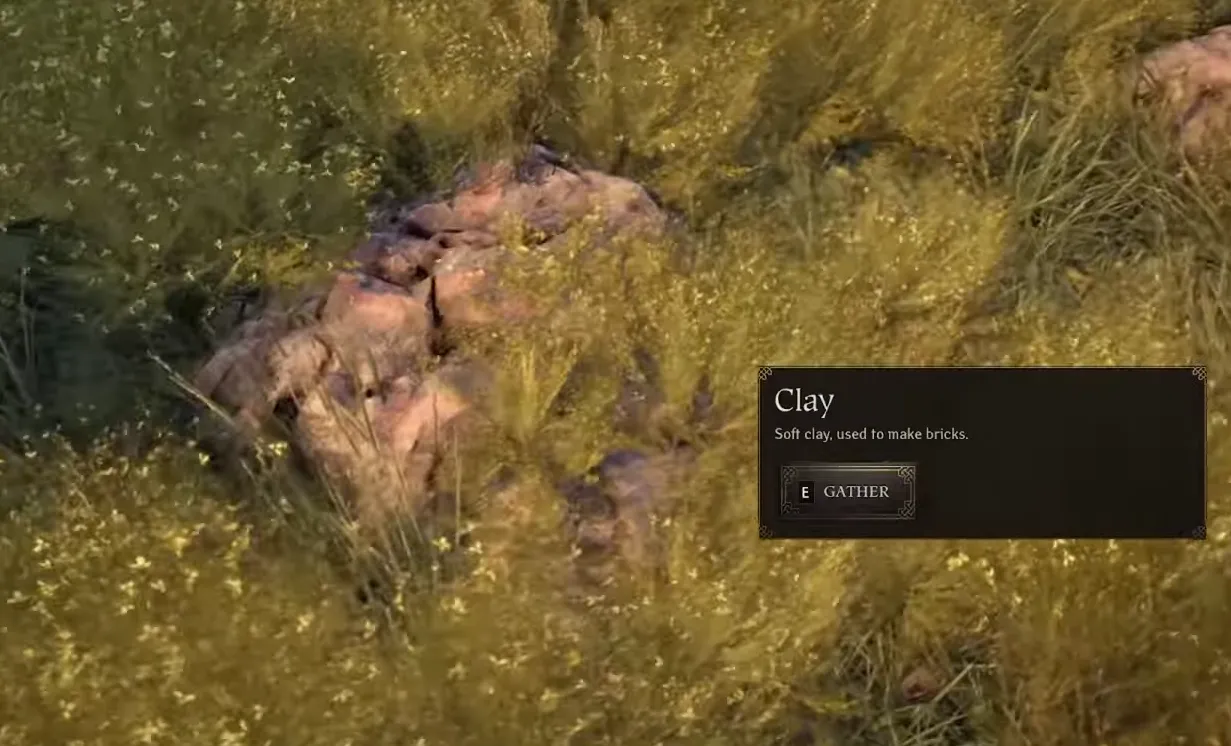| Property | Details |
|---|---|
| Item description | Soft, until baked; used to make bricks |
| Where it spawns | All biomes, near water |
| Node behavior | Appears in small clusters |
| Spawn count per cluster | 4 |
| Cluster radius | ~3.5 meters |
| Respawn time | ~30 minutes |
| Max stack size | 100 |
Identify clay in the world
Clay shows up as small, orange‑brown patches or rocky lumps on the ground. You don’t need a tool to harvest it—walk up to a patch and interact to collect. Because nodes spawn in tight groups, once you spot one patch, scan a few meters around it for the rest of the cluster before moving on.

Where clay spawns consistently
The best signal is proximity to water. Clay can be gathered across all biomes as long as you’re near rivers, streams, lakes, or wetlands. It often sits a short distance back from the shoreline rather than right on the water’s edge, so sweep the bank and the first tier of ground beyond it.
On busy servers, popular lakes can be ringed by player plots, which reduces accessible spawns directly on the shore. If that’s your situation, follow river corridors, check less‑developed banks, or fan out from water into nearby grassland to catch clusters that sit just off the coast.

Respawn timing and shared nodes
Clay clusters refresh on roughly a 30‑minute timer. The world is shared, so a spawn can be empty simply because another player just harvested it—there’s no visual “missing node” indicator. If your run comes up dry, rotate to a second water route and loop back after the timer; clusters in the same area tend to repopulate together.
What clay is used for
Clay underpins early construction. You’ll use it to produce bricks and to assemble many structural and decorative pieces, including cottage walls and doorways, floors and stairs, roof supports, and planters. It also feeds key crafting setups like kilns and ovens. Plan on stockpiling: large builds can chew through stacks quickly, and each stack caps at 100.

Efficient farming loop
- Pick two or three water‑adjacent routes that aren’t heavily built over.
- Hug the bank, then scan a few meters inland; clay often sits slightly off the shore.
- When you find a patch, circle within ~3–4 meters to clear the whole cluster.
- If a route is dry, switch to the next and return after ~30 minutes.
- If you’re establishing a base, building near recurring clusters reduces travel time between harvesting and construction.
Once you have a couple of reliable river or lakeside circuits, clay becomes a predictable part of your build cadence: sweep, craft, place, and repeat as clusters roll over on their timer.


